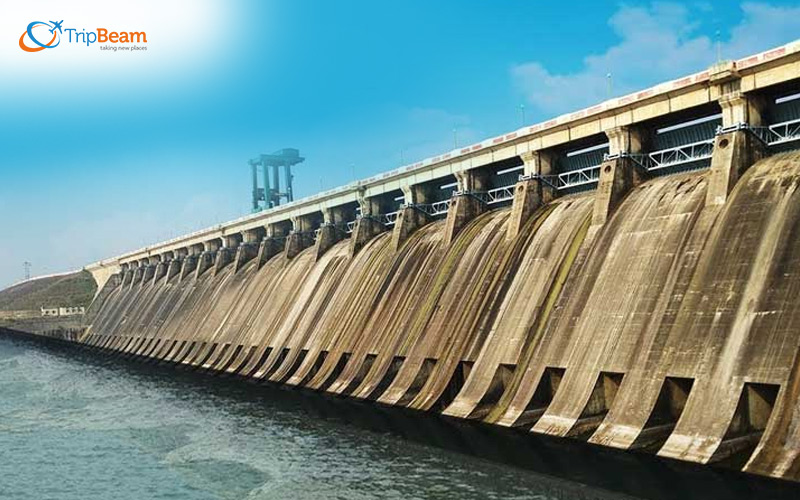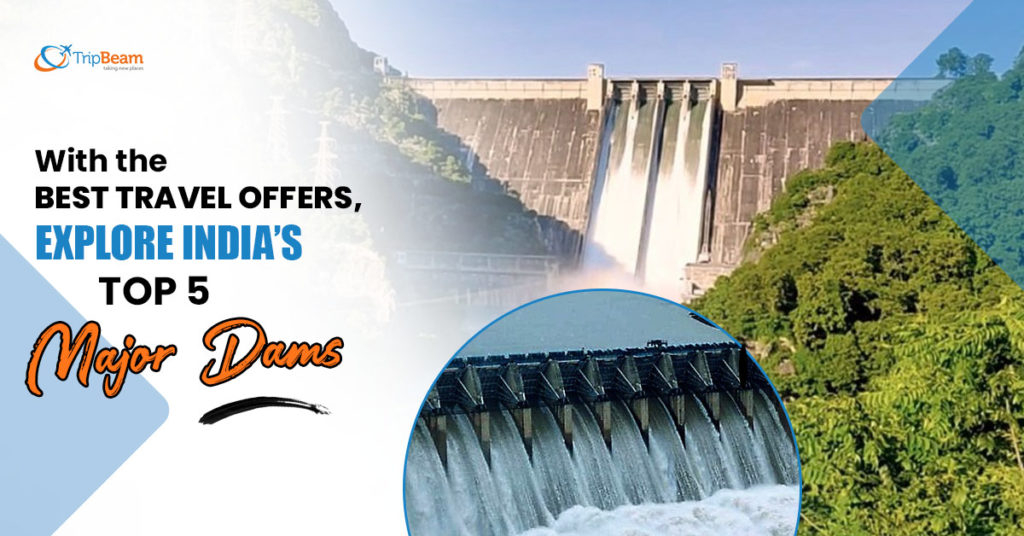Writing about dams in India transports us back to my school days when a day trip meant a picnic at the nearest dam. As the nostalgia sets in, we use to wonder what we wouldn’t give to go back in time and relive those days. Interestingly, India has approximately 4000 dams, some of which are among the longest and largest in the country, and some of which are among the largest in the world. Surrounded by diverse fauna and lush green scenery, these dams provide power to hundreds of towns and even huge cities. These technical wonders, which are located throughout the country, attract a great number of tourists with the best travel offers. Ride over to the nearby dam with your team and make a day of it.
What exactly is the Dam?
A dam is a superstructure that limits the flow of water, allowing a reservoir to form. Dams are mainly constructed to create electricity by using water. This kind of power is known as hydroelectricity.
Dam-created reservoirs not only prevent flooding, but also offer water for purposes such as agriculture, human consumption, industrial usage, aquaculture, and navigation.
The Jawa Dam in Jordan is the oldest known dam, dating back to 3,000 BC.
Water in India is an issue of extremes, ranging from drought to flood, from life to death. There is no other region on the earth with such extremes of wet and dryness. Water is so important in Indian culture that Hindus regard the country’s rivers as sacred. At the same time, mastery of these sacred rivers has been critical to India’s survival. It’s a campaign that’s been going on for millennia, with varying degrees of success.
- Hirakud Dam


This is the world’s largest earthen dam. Not convinced? The dam also creates Asia’s largest manmade lake. That should do the trick. Because it is the largest, the lake draws a lot of species, notably migratory birds in the winter making it a perfect hotspot for tourists traveling by best travel offers. As summer approaches, the dam’s waters naturally recede. This is not to say that the gorgeous area is not worth seeing during the summer, as this is when you may see temples (on a boat trip in the dam) that are ordinarily submerged in water throughout the winter. Over a 58-year span, over 150 structures have been demolished and deluged underwater, yet 50 have survived.
For adventurers from all around the world, these lost temples provide an excellent opportunity to dive and explore the dam’s underbelly. Furthermore, its reservoir is 55 kilometers long. So, if you’ve been thinking about taking a long journey, this is the place to be. Nehru Minar and Gandhi Minar are the two observation platforms from which visitors coming by affordable holiday packages to India may gaze down at the breathtaking landscape.
- Tehri Dam
While the Hirakud dam is the longest in the country (and the globe), it is not the tallest. The Tehri dam is the tallest in India and the ninth highest in the world. This dam’s lake reservoir serves as a significant tourist attraction for travelers coming by last minute flights to India, attracting explorers from all over the country. Jet skiing, paragliding, and boat riding are popular activities for visitors. The majestic Tehri Dam, at 260 meters in height, is one of the world’s highest dams and the tallest dam in India. Tehri Dam, an engineering marvel in its own right, not only supplies more than 1,000 MW of hydroelectricity but is also a renowned tourist site in Uttarakhand.
The dam reservoir, also known as Tehri Lake, is frequently visited by visitors interested in boating and is quickly becoming a renowned center for adventure tourism in Uttarakhand.
- Sardar Sarovar Dam
Sardar Sarovar Dam in Gujarat (or Narmada Dam) stands 163 meters tall and is built over the holy Narmada river. There is so much to see on this gorgeous site that it is impossible to grow bored. For starters, there’s a lovely garden with a waterfall backdrop where you may spend some quality time with your family. Without a doubt, the view from here is breathtaking. Even better, there are several vantage points from which to take it all in. There’s also a trekking trail nearby, so arrange a one-week trip with your crew with the best online air tickets to Ahmedabad to get your hiking muscles warmed up.
The Sardar Sarovar Project is one of India’s greatest water resource projects, spanning four states: Maharashtra, Madhya Pradesh, Gujarat, and Rajasthan. The spillway discharge capacity of the dam (30.7 lakh cusecs) will be the third biggest in the world.
The Narmada Main Canal would be the world’s biggest irrigation canal, with a capacity of 1133 cumecs (40000 cusecs) at the head regulator and a length of 532 kilometers.
The dam is India’s third highest concrete dam (163 meters), behind Bhakra (226 meters) in Himachal Pradesh and Lakhwar (192 meters) in Uttar Pradesh. With an aggregate volume of 6.82 million cu.m., this dam will be the world’s second biggest in terms of concrete volume for gravity dams.
- Bhangra Nangal Dam
The Bhakra Dam is located in the Himachal Pradesh district of Bilaspur, across the Satluj River from Bhakra Village (upstream). Its reservoir, known as ‘Gobind Sagar,’ can hold up to 9.34 billion cubic meters of water. Jawaharlal Nehru honorably referred to it as the “New Temple of Resurgent India.” It draws a large number of visitors from all across the country. Bhakra Dam is located 15 kilometers from Nangal. Bhakra Dam’s downstream dam is Nangal Dam. They are together known as the Bhakra Nangal Dam.
The Bhakra Nangal multi-purpose dams are the first river valley development projects undertaken by the government after independence. It is one of the world’s highest gravity dams. The dam constructed the Gobindsagar reservoir, which is India’s third biggest reservoir. It retains water well and protects the fields during monsoons. It contains 10 power generators on each side. It is also the fourth largest dam after the Tehri dam. Visitors to Bhakra Nangal were restricted in 2009 for security concerns.
- Nagarjuna Sagar Dam
The world’s largest masonry dam, Nagarjunasagar Dam, is built across the Krishna River in Nalgonda District and is protected by 26 gates measuring 14m in height and 13m in width.
The dam has a storage capacity of about 11,472 million cubic meters and an irrigation capacity of 10 acres. The dam is 150 meters tall and 16 kilometers long, and it is also a popular tourist destination. It is one of the earliest irrigation projects initiated by the Indian government as part of the Green Revolution.
The dam attracts a large number of tourists who booked the best travel offers due to its magnificence as well as the dense greenery that surrounds it, providing a captivating view.
Those who have seen all of India’s major tourist spots should visit one of these dams for a nice time. A wonderful day trip to organize with your family includes pristine waters, rich green scenery, and abundant animals.

